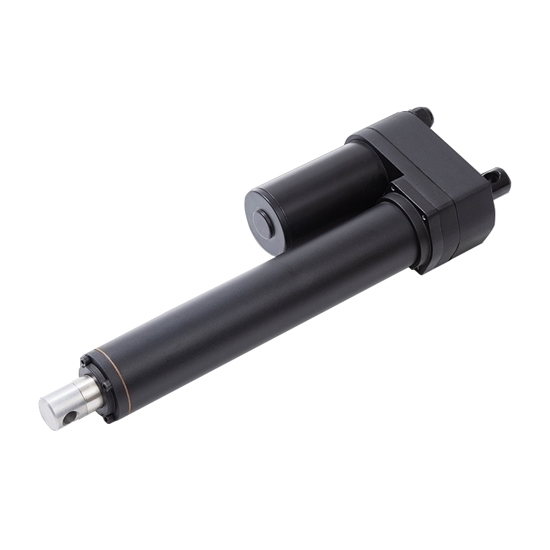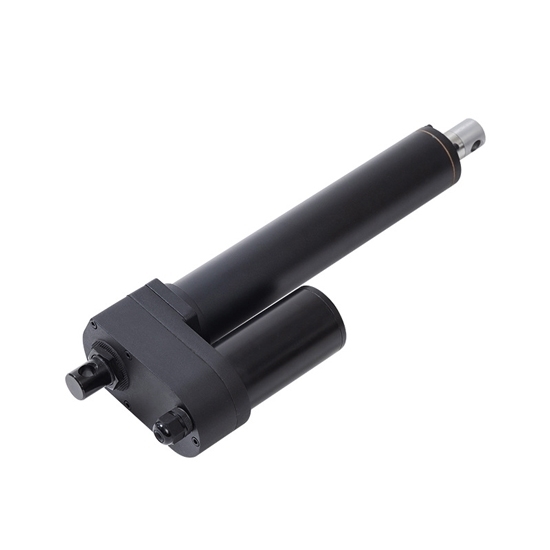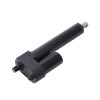



- Stock: In Stock
- Model: RDDLZ-LACTU-3500
- Weight: 1.00
- SKU: RDDLZ-LACTU-3500
Available Options
The provided electric linear actuator is high efficiency, relatively high load at 3,500 N, with 12 volt DC voltage, 24 volt is available. This miniature linear actuator is typically used for industrial, agricultural machinery, clean sweeping vehicles, vessels, cargo and other automatic control windows applications.
Electric Linear Actuator Specifications
| Model | RDDLZ-DJ830 |
| Max. Dynamic Load | 3500N |
| Max. Self-locking | 5000N |
| Input Voltage | 12V DC, 24V DC, 36V DC, 48V DC (Option) |
| Rated Power | 0.25kW |
| Rated Speed | 4000 rpm |
| Lead Screw | Acme Screw |
| Operation Mode | Electrical |
| Stroke Range | 50-1000mm |
| Duty Cycle | 25% |
| Motor Type | Brushed DC |
| Application | Industrial |
| Operational Temp. | -10℃ to 65℃ |
| Operating Noise | ≤65 dB |
| Weather Protection | IP65 |
| Overload Protection | None (standard) |
| Position Feedback | None (standard), Endstop signal, Hall sensor, Reed switches for optional |
| Weight | 5kg |
Linear Actuator Load and Speed Selection
| Code | Max. Dynamic Load | Max. Self-locking | Reduction Ratio | Pitch | Speed±10% (mm/s) | Max.stroke without potentiometer | |
| (N) | (N) | - | (mm) | Free Load | Full Load | (mm) | |
| A | 4000 | 5000 | 40:1 | 3.17 | 5.5 | 4 | 1000 |
| B | 2000 | 3000 | 86:1 | 5 | 8.5 | 7 | 1000 |
| C | 1500 | 2500 | 86:1 | 3.17 | 11 | 9.5 | 1000 |
| D | 1200 | 2000 | 43:1 | 5 | 17 | 14 | 1000 |
| E | 1000 | 1500 | 43:1 | 3.17 | 22 | 18 | 1000 |
| F | 500 | 700 | 43:1 | 5 | 35 | 28.5 | 1000 |
Note:
- Measurements are made with actuators in connection with stable power supplies and ambient temperature at 20°C.
- For example, when real load is 2400N, choosing code (D) is fine. Of course, you can also choose (C), (B) or even (A) which come with more load buffer, higher safety factor and longer product service time.
- There are many factors affecting the "customizable maximum stroke", such as load, speed, force direction, etc., so the real application scenarios should be considered. If the parameters you required are not listed, please contact our sales engineers.
Linear Actuator Standard Dimension (mm)
L: Stroke, A: Installation Length
- L=50~399mm, A+0mm
- L≥500mm, A+50mm
Mounting Ends Vs Install. Length
| Front Mount. Ends | Rear Mount. Ends |
| FO1 | A≥ S+200mm (min.250) |
Stroke VS Install. Length
| Stroke (S)(mm) | Install. Length (L)(mm) |
| 50-399 | +0 |
| ≥400 | +50 |
How to calculate "Install. Length"?
S=Stroke, L=Install Length, L≥ A+ B
Example
| Front Mount. | Rear Mount. | S(mm) | A(mm) | B(mm) | L≥A+B(mm) |
| F01 | RO1 | 300 | 300+250 | 0 | ≥550 |
12V/24V/36V/48V Linear Actuator Current-Load Curve
Tips: Why doesn't linear actuator rotate?
Linear actuator has a wide application in our life. It is used in both medical and industrial fields. However, we might encounter the problem of non-rotation of the linear actuator in using. Why is this?
- The motor does not rotate at a constant speed. Although the revolving speed of the motor is theoretically constant, it is mostly caused by the condition that the pushed object of the linear actuator is not fixed in case of a non-constant speed of the rotation.
- The motor rotates at a rather slow speed. We have to firstly check if the pushed object of the linear actuator is overloaded. If yes, it will certainly result in the slow speed of the rotation. Another possible reason of such a phenomenon is that the motor has rustiness or insufficient lubrication degree because the motor hasn't been used for years.
- The motor doesn't rotate. In case of such a problem, we have to check if the pushed object is overloaded or if the operation circuit is obstructed so as not to be moved, and then check if the power supply circuit is normal or not. If none of the above circumstances occurs, we have to check if the insurance control switch near the motor rest switch is closed or not.
